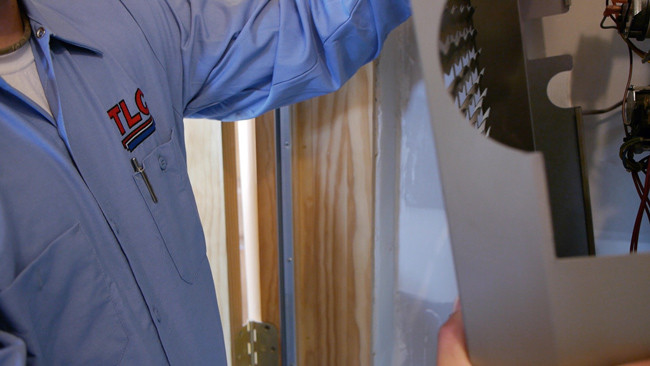Most of the time when you are replacing your furnace it is typically replaced with the same size of unit it was before as in space. Furnace size has two variations, BTUs (British thermal unit) and physical cabinet size. Most furnaces are about the same size so there aren’t usually major differences when replacing your old furnace. There are only usually modifications to energy efficiency and speed options that are now available for your home.
Understanding furnace size BTUs:
A typical furnace is rated at 100,000 or 80,000 BTU per hour, but this is just an average. While it may seem ideal to purchase a furnace that has a high BTU rate to ensure heat output, it isn’t the best measurement. On the contrary a home with an over-sized furnace may cycle on and off and run up your energy bills. On the flip side it is not wise to purchase a lower BTU unit to save money because an undersized unit will not heat your home adequately.
Factors that determine furnace size for your home:
Usually you don’t have to make too many modifications to furnace size when replacing an existing furnace. But its always good to know how the size of your furnace is determined. Especially if you’ve made modifications to your home, or you’ve recently relocated to another area.
Did you Know – TLC is the leader in furnace inspection and furnace repair in Albuquerque?
Square Footage
Your home’s total square footage is probably the biggest factor when determining furnace size. Some homes will require more than one unit to heat their home if their square footage and layout exceeds 2,500 total sq/ft.
Climate Considerations
The HVAC professionals and suppliers in your area should have a good understanding of the best type of heating units for your climate. Areas with cold winters are going to require furnaces with higher BTUs than areas with mild temperatures. Suppliers will have furnaces that meet the heating demand for your climate.
Things that can affect furnace size replacement
Sometimes it will be necessary to modify the furnace size when replacing your existing furnace. This may require your HVAC professional to install a smaller or larger unit for your home. Things that are common in these cases are as follows:
1. Existing furnace not sized adequately
If your existing furnace was sized too small or too large for your home it will need to be sized differently. Talk to your HVAC professional if you’re concerned your current system is over or undersized for your home comfort.
2. You’ve remodeled or renovated your home
Any new additions should be taken into consideration if you have more areas to heat. The layout of your home may have changed and your existing furnace size may not be able to meet the heating demand in your home.
3. You are upgrading from a floor furnace
If you are replacing a floor furnace with a standard furnace you will have a different sized unit. It might be similar size as in BTUs but physically it will have to be located in a different area depending on the home layout.
Other than these above-mentioned instances when it comes to size in most cases your furnace will be replaced with the same sized unit. If you are worried about your furnace size and concerned that it might not meet your comfort needs, you should discuss your concerns with your HVAC professional.
Download our free furnace buying guide:
This guide was designed to provide you with valuable information when replacing your furnace. If you are considering replacing your furnace get all the information you need to make an informed decision.

